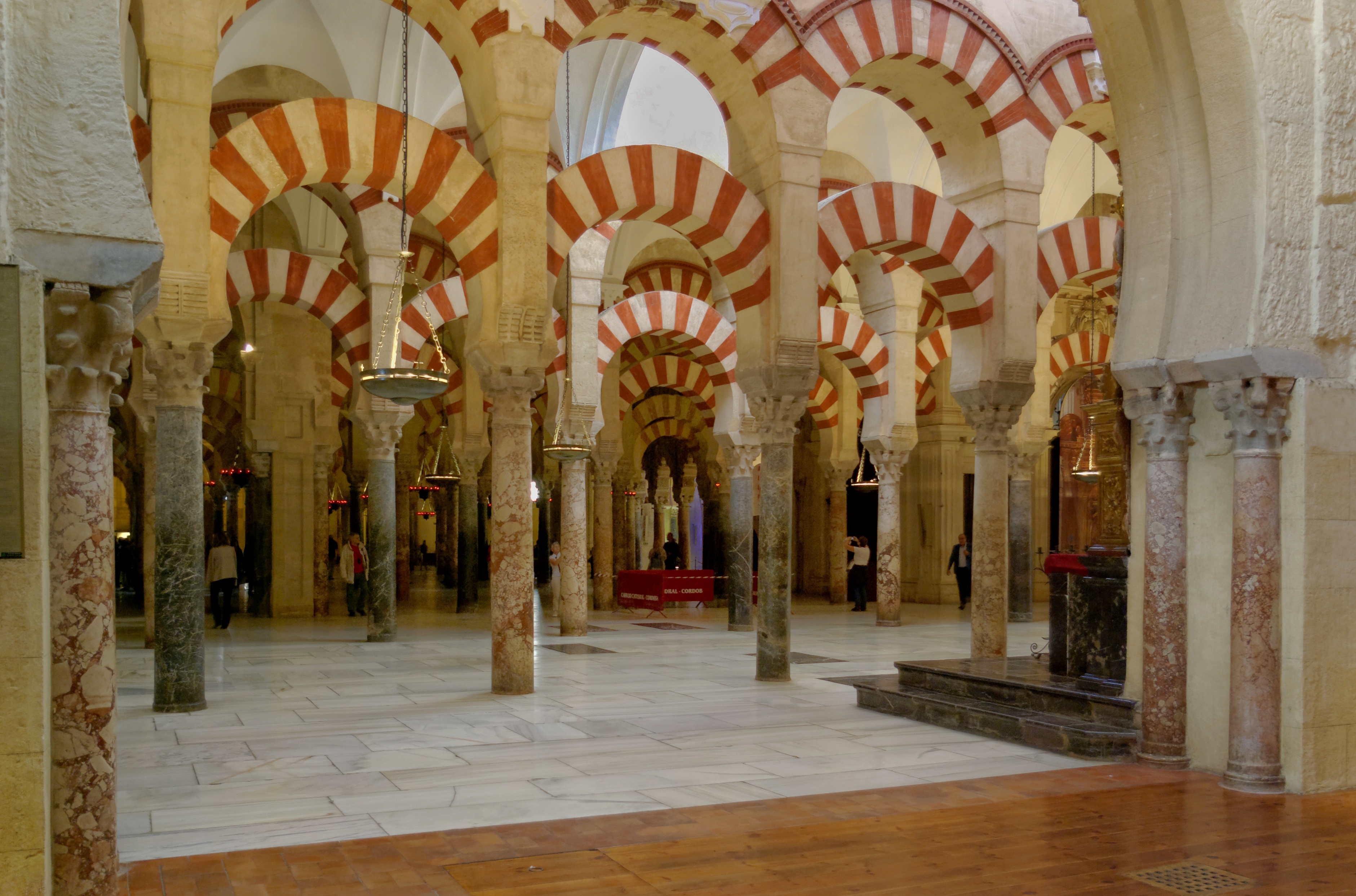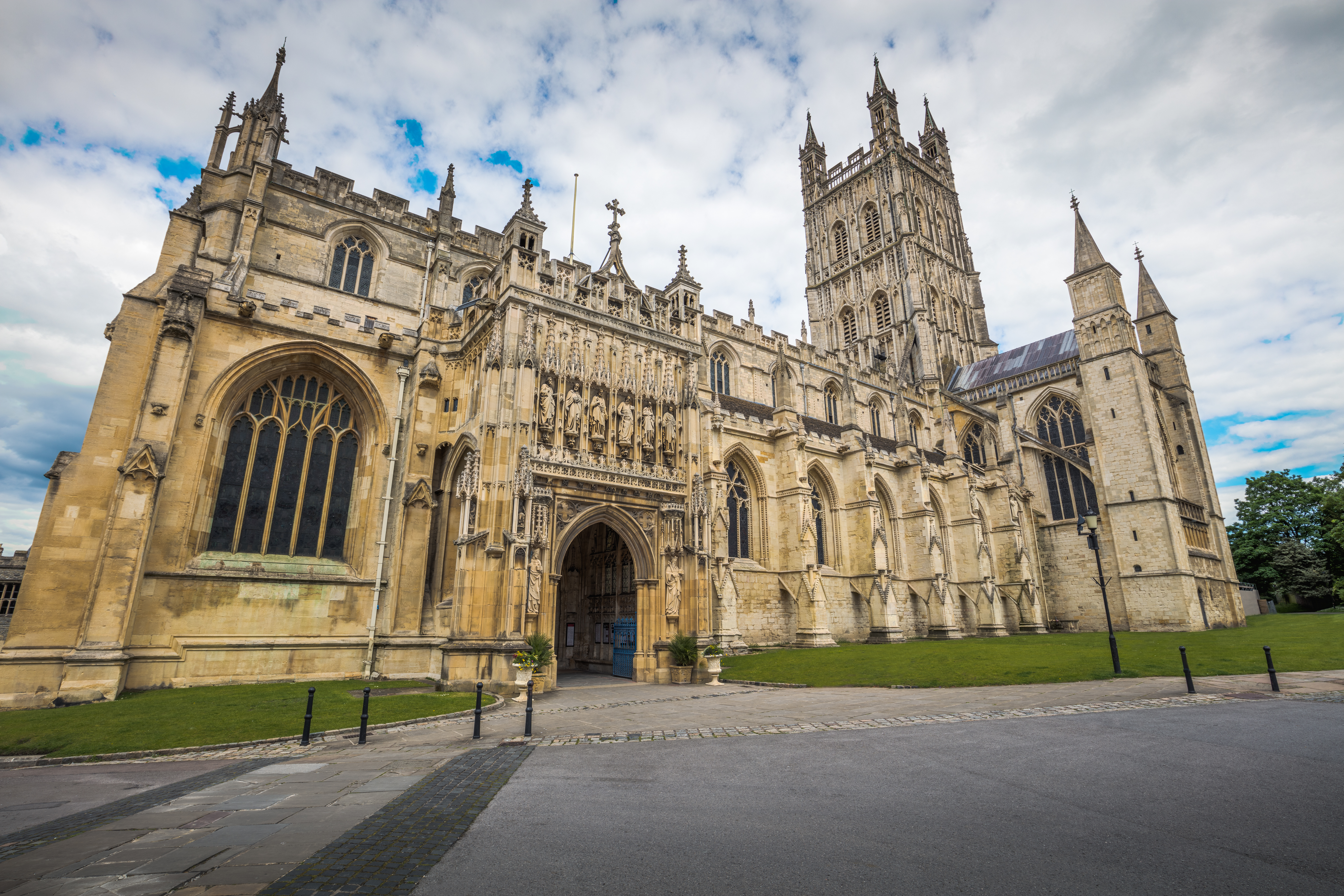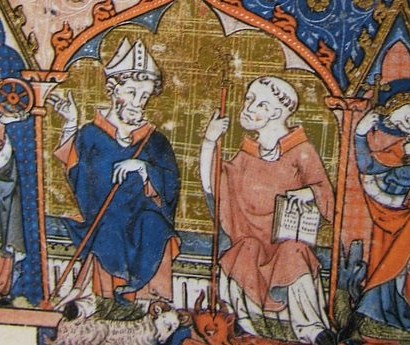|
January 16
Events Pre-1600 * 1458 BC – Hatshepsut dies at the age of 50 and is buried in the Valley of the Kings. * 27 BC – Gaius Julius Caesar Octavianus is granted the title Augustus by the Roman Senate, marking the beginning of the Roman Empire. * 378 – General Siyaj K'ak' conquers Tikal, enlarging the domain of King Spearthrower Owl of Teotihuacán. * 550 – Gothic War: The Ostrogoths, under King Totila, conquer Rome after a long siege, by bribing the Isaurian garrison. * 929 – Emir Abd-ar-Rahman III establishes the Caliphate of Córdoba. * 1120 – Crusades: The Council of Nablus is held, establishing the earliest surviving written laws of the Crusader Kingdom of Jerusalem. * 1275 – Edward I permits his mother Eleanor of Provence to expel the Jews from the towns Worcester, Marlborough, Cambridge and Gloucester. * 1362 – Saint Marcellus's flood kills at least 25,000 people on the shores of the North Sea. * 1537 &n ... [...More Info...] [...Related Items...] OR: [Wikipedia] [Google] [Baidu] |
1458 BC
The 1450s BC was a decade lasting from January 1, 1459, BC to December 31, 1450, BC. Events and trends * Battle of Megiddo (15th century BC) between Thutmose III and a coalition under the King of Kadesh. It is the first battle to have been recorded in what is accepted as relatively reliable detail. The battle took place in year 23 I Shemsu day 20 (or possibly day 21). The exact year depends on the year Thutmose ascended to the throne of Egypt and among scholars the estimates range from 1479 to 1504 BCE. Using the 1479 BCE estimate the battle could have taken place in May 1457 BCE. * 1451 BCE—According to James Ussher's chronology, this is when the Israelites entered the Promised Land. * c. 1450 BCE— Mycenaeans attack and capture Crete, destroying many royal palaces including Knossos. * c. 1450–1300 BCE—Minoan The Minoan civilization was a Bronze Age culture which was centered on the island of Crete. Known for its monumental architecture and Minoan art, energetic art, ... [...More Info...] [...Related Items...] OR: [Wikipedia] [Google] [Baidu] |
Abd-ar-Rahman III
ʿAbd al-Raḥmān ibn Muḥammad ibn ʿAbd Allāh ibn Muḥammad ibn ʿAbd al-Raḥmān ibn al-Ḥakam al-Rabdī ibn Hishām ibn Abd al-Rahman I, ʿAbd al-Raḥmān al-Dākhil (; 890–961), or simply ʿAbd al-Raḥmān III, was the Umayyad dynasty, Umayyad Emir of Córdoba from 912 to 929, at which point he founded the Caliphate of Córdoba, serving as its first caliph until his death. Abd al-Rahman won the ''laqab'' (sobriquet) () in his early 20s when he supported the Maghrawa Berbers in North Africa against Fatimid expansion and later claimed the title of Caliph for himself. His half-century reign was known for its Freedom of religion, religious tolerance. Life Early years Lineage and appearance Abd al-Rahman was born in Córdoba, Spain, Córdoba, on 18 December 890. His year of birth is also given as 889 and 891. He was the grandson of Abdullah ibn Muhammad al-Umawi, seventh independent Umayyad Caliphate, Umayyad emir of al-Andalus. His parents were Abdullah's son Muhamm ... [...More Info...] [...Related Items...] OR: [Wikipedia] [Google] [Baidu] |
1362
Year 1362 ( MCCCLXII) was a common year starting on Saturday of the Julian calendar. Events January–December * January 1 – The Grand Duchy of Lithuania switches New Year to January 1, before any other country does. * January 16 – The " Grote Mandrenke" storm tide strikes the Netherlands, England, Germany and Denmark, destroying the Danish settlement of Rungholt in the Duchy of Schleswig, and the Humber estuary port of Ravenser Odd in England. The East Frisian island of Buise is broken into two by North Sea floods. * February 15 – King Haakon VI of Norway, son of Magnus IV of Sweden, proclaims himself king of Sweden in opposition to his father. However, later in the year, father and son are reconciled and rule Sweden together. * March – Murad I succeeds his father Orhan as sultan of the Ottoman Empire. * March – Champa, during the reign of King Po Binasuor, raids Hóa Châu of Đại Việt, then withdraws. * April – Muhammed V, ... [...More Info...] [...Related Items...] OR: [Wikipedia] [Google] [Baidu] |
Gloucester
Gloucester ( ) is a cathedral city, non-metropolitan district and the county town of Gloucestershire in the South West England, South West of England. Gloucester lies on the River Severn, between the Cotswolds to the east and the Forest of Dean to the west; it is sited from Monmouth, from Bristol, and east of the England and Wales border, border with Wales. Gloucester has a population of around 132,000, including suburban areas. It is a port, linked via the Gloucester and Sharpness Canal to the Severn Estuary. Gloucester was founded by the Roman Empire, Romans and became an important city and ''Colonia (Roman), colony'' in AD 97, under Nerva, Emperor Nerva as ''Glevum, Colonia Glevum Nervensis''. It was granted its first charter in 1155 by Henry II of England, Henry II. In 1216, Henry III of England, Henry III, aged only nine years, was crowned with a gilded iron ring in the Chapter House of Gloucester Cathedral. Gloucester's significance in the Middle Ages is unde ... [...More Info...] [...Related Items...] OR: [Wikipedia] [Google] [Baidu] |
Cambridge
Cambridge ( ) is a List of cities in the United Kingdom, city and non-metropolitan district in the county of Cambridgeshire, England. It is the county town of Cambridgeshire and is located on the River Cam, north of London. As of the 2021 United Kingdom census, the population of the City of Cambridge was 145,700; the population of the wider built-up area (which extends outside the city council area) was 181,137. (2021 census) There is archaeological evidence of settlement in the area as early as the Bronze Age, and Cambridge became an important trading centre during the Roman Britain, Roman and Viking eras. The first Town charter#Municipal charters, town charters were granted in the 12th century, although modern city status was not officially conferred until 1951. The city is well known as the home of the University of Cambridge, which was founded in 1209 and consistently ranks among the best universities in the world. The buildings of the university include King's College Chap ... [...More Info...] [...Related Items...] OR: [Wikipedia] [Google] [Baidu] |
Marlborough, Wiltshire
Marlborough ( , ) is a market town and Civil parishes in England, civil parish in the England, English Counties of England, county of Wiltshire on the A4 road (England), Old Bath Road, the old main road from London to Bath, Somerset, Bath. The town is on the River Kennet, 24 miles (39 km) north of Salisbury and 10 miles (16 km) southeast of Swindon. History The earliest sign of human habitation is the Marlborough Mound, a prehistoric tumulus in the grounds of Marlborough College. Recent radiocarbon dating has found it to date from about 2400 BC. It is of similar age to the larger Silbury Hill about west of the town. Legend has it that the Mound is the burial site of Merlin (wizard), Merlin and that the name of the town comes from Merlin's Tumulus, Barrow. More plausibly, the town's name possibly derives from the medieval term for chalky ground "marl"—thus, "town on chalk". However more recent research, from geographer John Everett-Heath, identifies the original O ... [...More Info...] [...Related Items...] OR: [Wikipedia] [Google] [Baidu] |
Worcester, England
Worcester ( ) is a cathedral city in Worcestershire, England, of which it is the county town. It is south-west of Birmingham, north of Gloucester and north-east of Hereford. The population was 103,872 in the 2021 census. The River Severn flanks the western side of the city centre, overlooked by Worcester Cathedral. Worcester is the home of Royal Worcester, Royal Worcester Porcelain, Lea & Perrins (makers of traditional Worcestershire sauce), the University of Worcester, and ''Berrow's Worcester Journal'', claimed as the world's oldest newspaper. The composer Edward Elgar (1857–1934) grew up in the city. The Battle of Worcester in 1651 was the final battle of the English Civil War, during which Oliver Cromwell's New Model Army defeated Charles II of England, King Charles II's Cavalier, Royalists. History Early history The trade route past Worcester, later part of the Roman roads in Britain, Roman Ryknild Street, dates from Neolithic times. It commanded a ford crossing o ... [...More Info...] [...Related Items...] OR: [Wikipedia] [Google] [Baidu] |
Eleanor Of Provence
Eleanor of Provence ( 1223 – 24/25 June 1291) was a Provence, Provençal noblewoman who became List of English royal consorts, Queen of England as the wife of King Henry III of England, Henry III from 1236 until his death in 1272. She served as regent of England during the absence of her spouse in France in 1253. Although Eleanor was completely devoted to her husband and staunchly defended him against the rebel Simon de Montfort, 6th Earl of Leicester, she was very unpopular among the Londoners. This was because she had brought many relatives with her to England in her retinue; these were known as "the Savoyards" (her mother was from Savoy), and, as Londoners saw it, these foreigners were given influential positions in the government and realm to lord over them. On one occasion, Eleanor's barge was attacked by angry Londoners who pelted her with stones, mud, pieces of paving, rotten eggs and vegetables. Eleanor had five children, including the future King Edward I of England. ... [...More Info...] [...Related Items...] OR: [Wikipedia] [Google] [Baidu] |
Edward I Of England
Edward I (17/18 June 1239 – 7 July 1307), also known as Edward Longshanks and the Hammer of the Scots (Latin: Malleus Scotorum), was King of England from 1272 to 1307. Concurrently, he was Lord of Ireland, and from 1254 to 1306 ruled Duchy of Gascony, Gascony as Duke of Aquitaine in his capacity as a vassal of the French king. Before his accession to the throne, he was commonly referred to as the Lord Edward. The eldest son of Henry III of England, Henry III, Edward was involved from an early age in the political intrigues of his father's reign. In 1259, he briefly sided with a baronial reform movement, supporting the Provisions of Oxford. After reconciling with his father, he remained loyal throughout the subsequent armed conflict, known as the Second Barons' War. After the Battle of Lewes, Edward was held hostage by the rebellious barons, but escaped after a few months and defeated the baronial leader Simon de Montfort at the Battle of Evesham in 1 ... [...More Info...] [...Related Items...] OR: [Wikipedia] [Google] [Baidu] |
1275
Year 1275 (Roman numerals, MCCLXXV) was a common year starting on Tuesday of the Julian calendar. Events By place Byzantine Empire * Battle of Neopatras: Emperor Michael VIII Palaiologos assembles a Byzantine expeditionary force (some 30,000 men), mostly mercenaries from Second Bulgarian Empire, Bulgaria, Kingdom of Serbia (medieval), Serbia and the Sultanate of Rum. He places these forces under his own brother, John Palaiologos (brother of Michael VIII), John Palaiologos, and General Alexios Kaballarios. Michael sends them against Thessaly, and is supported by the Byzantine navy led by Admiral Alexios Doukas Philanthropenos, who is ordered to attack the Latin principalities and prevent them from aiding John I Doukas of Thessaly, John I ("Angelos"), ruler of Thessaly. John is caught by surprise by the rapid advance of the Byzantine forces and is bottled up with a garrison in his capital of Ypati, Neopatras, which the Byzantines proceed to lay siege. John manages to es ... [...More Info...] [...Related Items...] OR: [Wikipedia] [Google] [Baidu] |
Kingdom Of Jerusalem
The Kingdom of Jerusalem, also known as the Crusader Kingdom, was one of the Crusader states established in the Levant immediately after the First Crusade. It lasted for almost two hundred years, from the accession of Godfrey of Bouillon in 1099 until the Siege of Acre (1291), fall of Acre in 1291. Its history is divided into two periods with a brief interruption in its existence, beginning with its collapse after the Siege of Jerusalem (1187), siege of Jerusalem in 1187 and its restoration after the Third Crusade in 1192. The original Kingdom of Jerusalem lasted from 1099 to 1187 before being almost entirely overrun by the Ayyubid dynasty, Ayyubid Sultanate under Saladin. Following the Third Crusade, it was re-established in Acre, Israel, Acre in 1192. The re-established state is commonly known as the "Second Kingdom of Jerusalem" or, alternatively, as the "Kingdom of Acre" after its new capital city. Acre remained the capital for the rest of its existence, even during the tw ... [...More Info...] [...Related Items...] OR: [Wikipedia] [Google] [Baidu] |
Council Of Nablus
The Council of Nablus was a council of ecclesiastic and secular lords in the crusader Kingdom of Jerusalem, held on January 16, 1120. History The council was convened at Nablus by Warmund, Patriarch of Jerusalem, and King Baldwin II of Jerusalem. It established twenty-five canon law, canons dealing with both religious and secular affairs. It was not quite a church council, but not quite a meeting of the royal court; according to Hans Eberhard Mayer, Hans Mayer, due to the religious nature of many of the canons, it can be considered both a ''parlement'' and an ecclesiastical synod. The resulting agreement between the patriarch and the king was a concordat, similar to the Concordat of Worms two years later. The council established the first written laws for the kingdom. It was probably also where Hugues de Payens obtained permission from King Baldwin II of Jerusalem and Warmund, Patriarch of Jerusalem to found the Knights Templar. The council was not mentioned in the chronicle of F ... [...More Info...] [...Related Items...] OR: [Wikipedia] [Google] [Baidu] |








